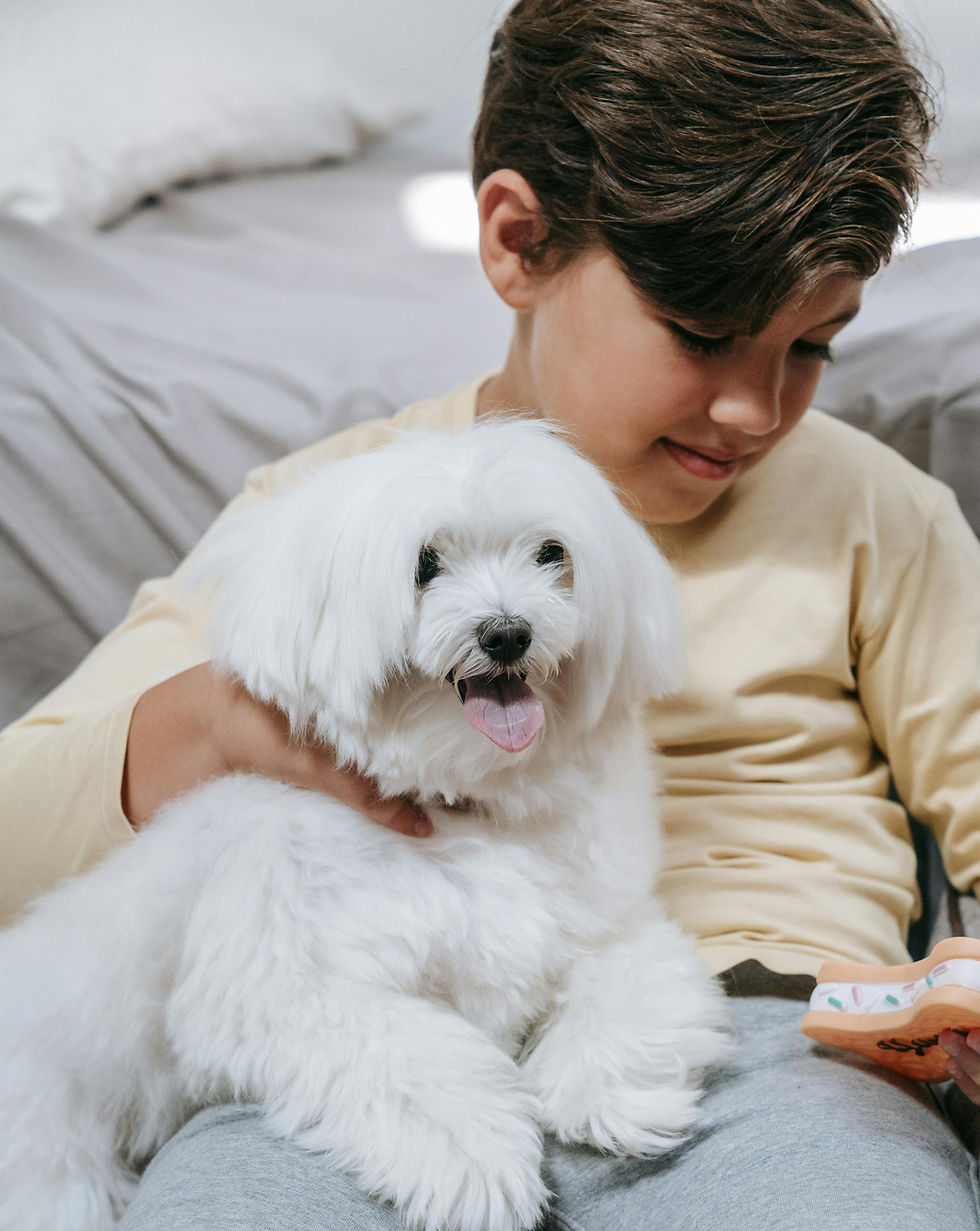It’s Not Cute If the Dog Isn’t Comfortable: Teaching Kids (And Adults) About Calming Signals
- UpDog Pet Services
- Aug 25
- 3 min read
When it comes to kids and dogs, one of the most important lessons we can teach is this: kindness is important, and the animal's comfort matters just like a person's does.
A dog who’s turning their head, licking their lips, yawning, stiffening up, or showing the whites of their eyes isn’t being “dramatic” — they’re politely saying, “I’m not okay with this right now.” Forcing a photo, a hug, or a pickup at that moment may look cute to us, but to the dog it’s stressful.
Respecting Boundaries
Just like people, dogs deserve to have their boundaries respected. When those calming signals go ignored, dogs feel trapped, anxious, and less trusting over time. Even if the dog “puts up with it,” that doesn’t mean they’re fine — it means they’re silently coping.

And the truth is, the memory of a stressful experience lingers. Dogs remember when their signals aren’t listened to, and that makes them less likely to relax in the future.
Dogs Don’t Bite “Out of Nowhere”
One of the biggest myths about dog behavior is that bites happen suddenly. In reality, most bites are the end result of a buildup of stress.
First come the subtle signals — turning away, licking lips, freezing. If those are ignored, the dog may try a stronger warning like a growl. Only when every other attempt to communicate fails will they resort to snapping or biting.
When children are taught to ignore these early signals, they not only make the dog uncomfortable in the moment — they increase the odds of things escalating later.
What Kids Really Learn
Allowing children to crowd, hug, or pick up a dog who is clearly uncomfortable doesn’t just put that child at risk — it teaches them that animals don’t get a say. While one dog may tolerate being handled, the next dog might not. And that’s when stress can boil over into a bite.

Safer, Kinder Alternatives
Let the dog approach on their terms.
Encourage tossing a treat instead of picking up.
Pet the chest, shoulders, or back instead of hugging.
Narrate what you see: “See how she turned her head? She’s asking for space.”
The Bottom Line
A “cute” photo op isn’t worth a dog’s discomfort — or the risk of teaching kids the wrong lesson. When children learn to notice and respect calming signals, they not only prevent bites, they also build a healthier relationship with animals based on trust and understanding. Teaching kids to recognize when a dog is uncomfortable is one of the best ways to keep both children and pets safe. The difference between a tense, stressed dog and a relaxed, comfortable one can be subtle — but once you know what to look for, it’s easy to spot.
If you’d like help learning to read your dog’s body language or teaching your children safe, respectful interactions, I can guide you through it step by step. Call or Contact Us to schedule your training evaluation and let's start building safer, more positive experiences for your family and your dog.



